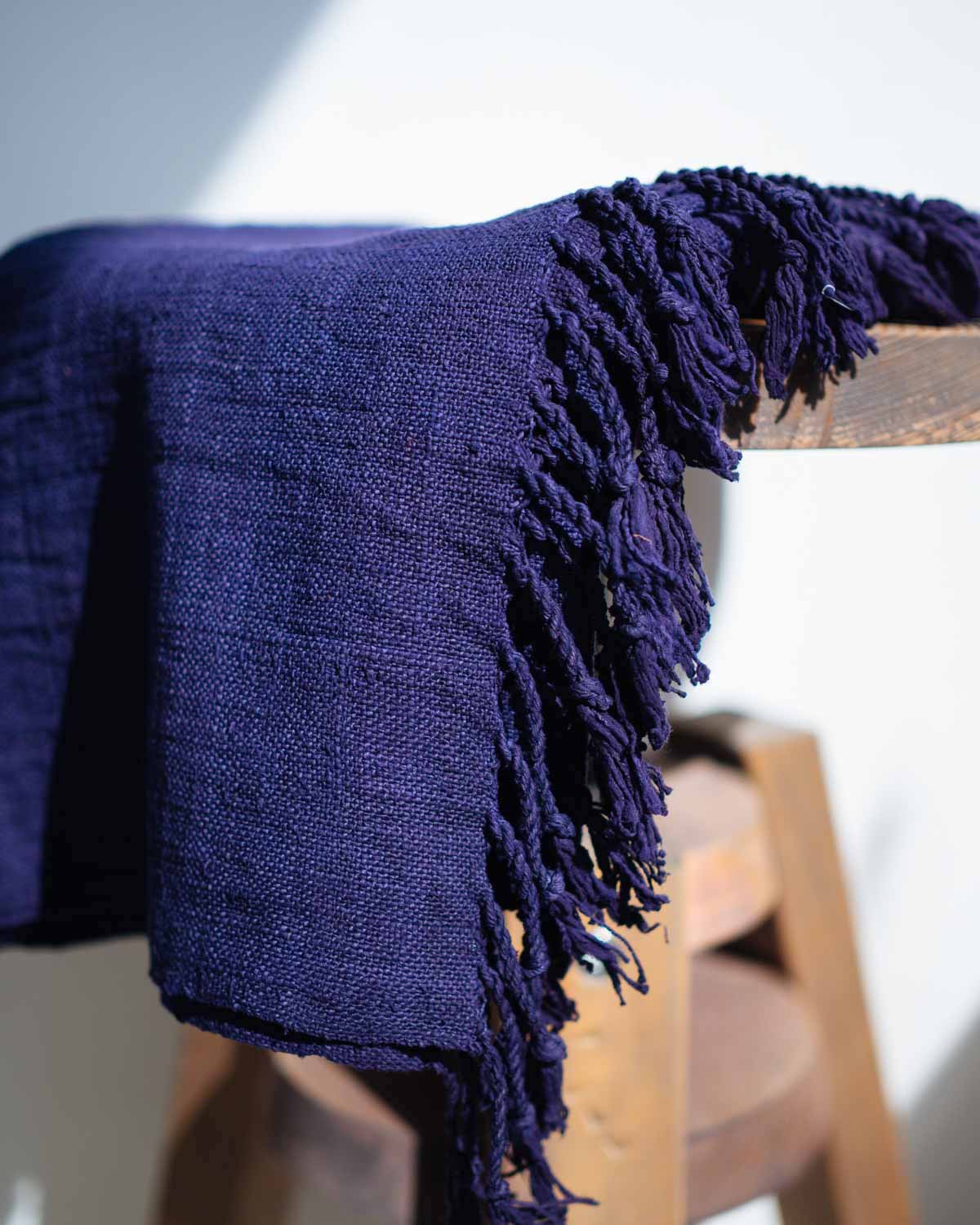Lotus flowers are sacred to Hindus and Buddhists. They symbolise the mind, the soul, enlightenment and purification of the body. Legend has it that the origins of lotus silk lie in one Myanmar woman’s devotion to her faith.

Lotus Flowers
The Past
Around a century ago, a woman from Inle Lake, Myanmar, decided to make a robe worthy for the incumbent monk at her local temple. To achieve this, she harvested stems from under the beautiful and sacred lotus flowers found growing on the majestic Inle Lake. The lotus stems can only be harvested in the rainy season of May to early October, during which time you can pull each flower stem individually from below the surface of the water, and each stem will (if you're are lucky and don’t break them!) give you enough fibres for a fraction of the silk needed to weave a scarf.

Inle Lake Fisherman
The Present
Recently, there has been a resurgence in this handicraft. The same labour intensive processes are used to this day in small workshops dotted around the lake in order to produce exceptional and unique fabrics. We travelled areas of the 45 square miles of the lake, past the famous fishermen, sculling their boats with one leg while keeping their hands free to cast their nets, to visit workshops that mainly cater to tourists. On the advice of our homestay host, we eventually found a workshop that had a distinct family feel to it. Named after their daughter, their simple workshop is built on stilts sunk deep into the lake’s bed, as are all the structures on Inle Lake. They are only accessible by boat with outboard engines, which speeds things up until the engine is cut, and you are paddled almost silently to a jetty, where thankfully you will be helped out of the low canoes onto the bamboo walkways. This particular family workshop consisted of two huts connected by a wooden bridge that barely spanned the open water below.
The Process
One side housed the small team of women weavers and those extracting the fibres from the lotus stems, the other was a small shop. Spending time with the artisans, listening to the looms and watching them work was a humbling and sensory experience. From seeing how the weavers ordered the shuttles holding the silk when weaving a pattern, to the opaque pistachio coloured paint on the carved teak newel post, to the sprig of blossom worn in a worker’s hair, there was a beauty and purpose in every movement. In this age of fast fashion, watching the painstaking procedure of making fabric from the lotus stems was almost meditative. Due to the slow nature of the process, the weavers are happy to sit patiently and go at the pace determined by the raw materials. Each stem is cut and pulled to expose the fibres within. The fibres are delicately rolled together by hand to produce a strong but soft silk, which is said to be able to impart some of their purifying powers to the wearer.

Daw Mee weaves a lotus silk scarf in the workshop on Inle Lake.
The Finished Scarf
The silk is then woven by hand on narrow looms and dyed using natural colours derived from native plants. These can range from a dark red to an intense indigo blue, to a soft pale gold. The scarves are a completely handmade artisan product, originally borne out one woman’s devotion and still produced with the same mesmeric attention to detail. Each of our scarves has taken at least a week to produce, excluding the harvesting and dyeing. The wholly natural textured weave is further proof of its origins. Unlike traditional silk they are completely vegan friendly. Lotus silk is truly an ethical, and eco-friendly, luxury item with more than a little soul.
Take a look at our lotus silk scarves here.






